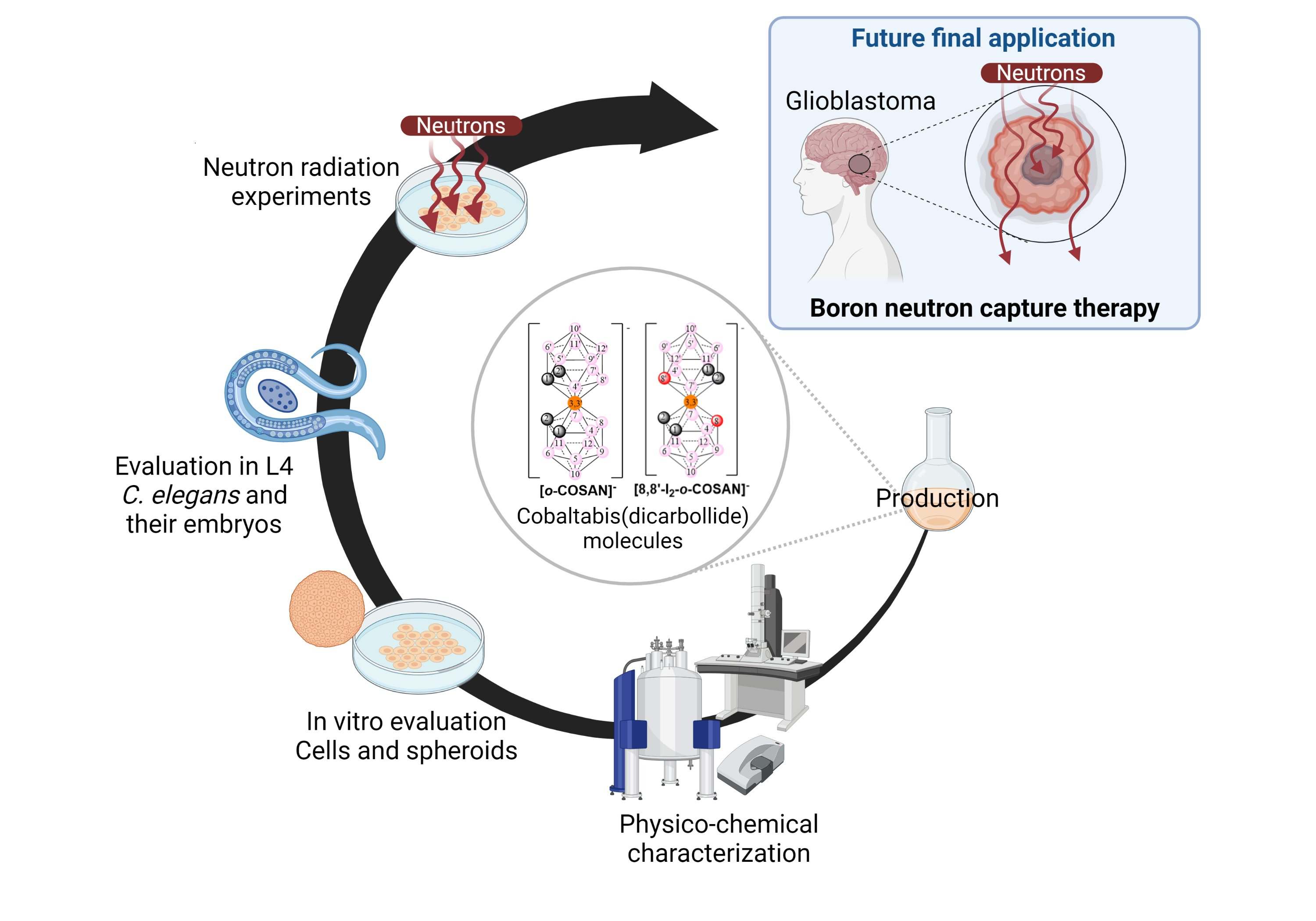
Hot off the press: New paper in MDPI Journal Cancers!
The paper “Cobaltabis(dicarbollide) ([o-COSAN]−) as Multifunctional Chemotherapeutics: A Prospective Application in Boron Neutron Capture Therapy (BNCT) for Glioblastoma“, was published in MDPI Journal Cancers.
N&N group members Amanda Muñoz-Juan and Anna Laromaine co-authored the publication in collaboration between many groups that has been coordinated by Inorganic Materials & Catalysis group from ICMAB-CSIC.
Abstract:
Purpose: The aim of our study was to assess if the sodium salt of cobaltabis(dicarbollide) and its di-iodinated derivative (Na[o-COSAN] and Na[8,8′-I2–o-COSAN]) could be promising agents for dual anti-cancer treatment (chemotherapy + BNCT) for GBM. Methods: The biological activities of the small molecules were evaluated in vitro with glioblastoma cells lines U87 and T98G in 2D and 3D cell models and in vivo in the small model animal Caenorhabditis elegans (C. elegans) at the L4-stage and using the eggs. Results: Our studies indicated that only spheroids from the U87 cell line have impaired growth after treatment with both compounds, suggesting an increased resistance from T98G spheroids, contrary to what was observed in the monolayer culture, which highlights the need to employ 3D models for future GBM studies. In vitro tests in U87 and T98G cells conclude that the amount of 10B inside the cells is enough for BNCT irradiation. BNCT becomes more effective on T98G after their incubation with Na[8,8′-I2–o-COSAN], whereas no apparent cell-killing effect was observed for untreated cells. Conclusions: These small molecules, particularly [8,8′-I2–o-COSAN]−, are serious candidates for BNCT now that the facilities of accelerator-based neutron sources are more accessible, providing an alternative treatment for resistant glioblastoma.
Amanda Muñoz, Anna Laromaine, C. elegans, gliobastoma, life science

